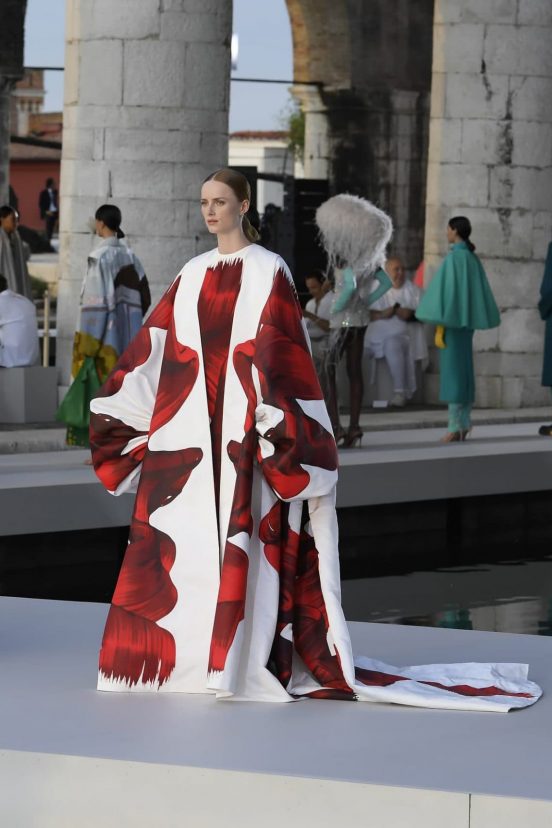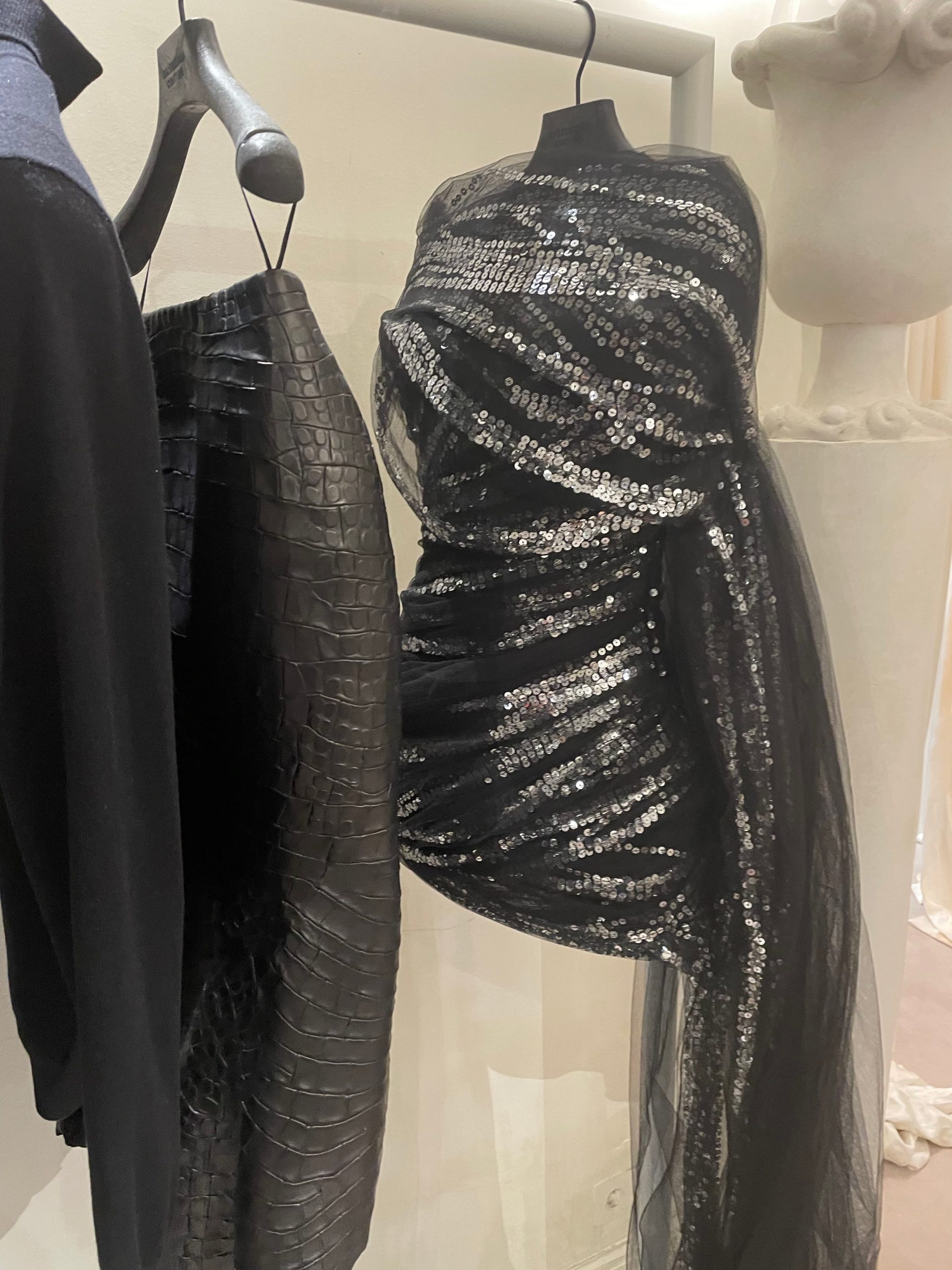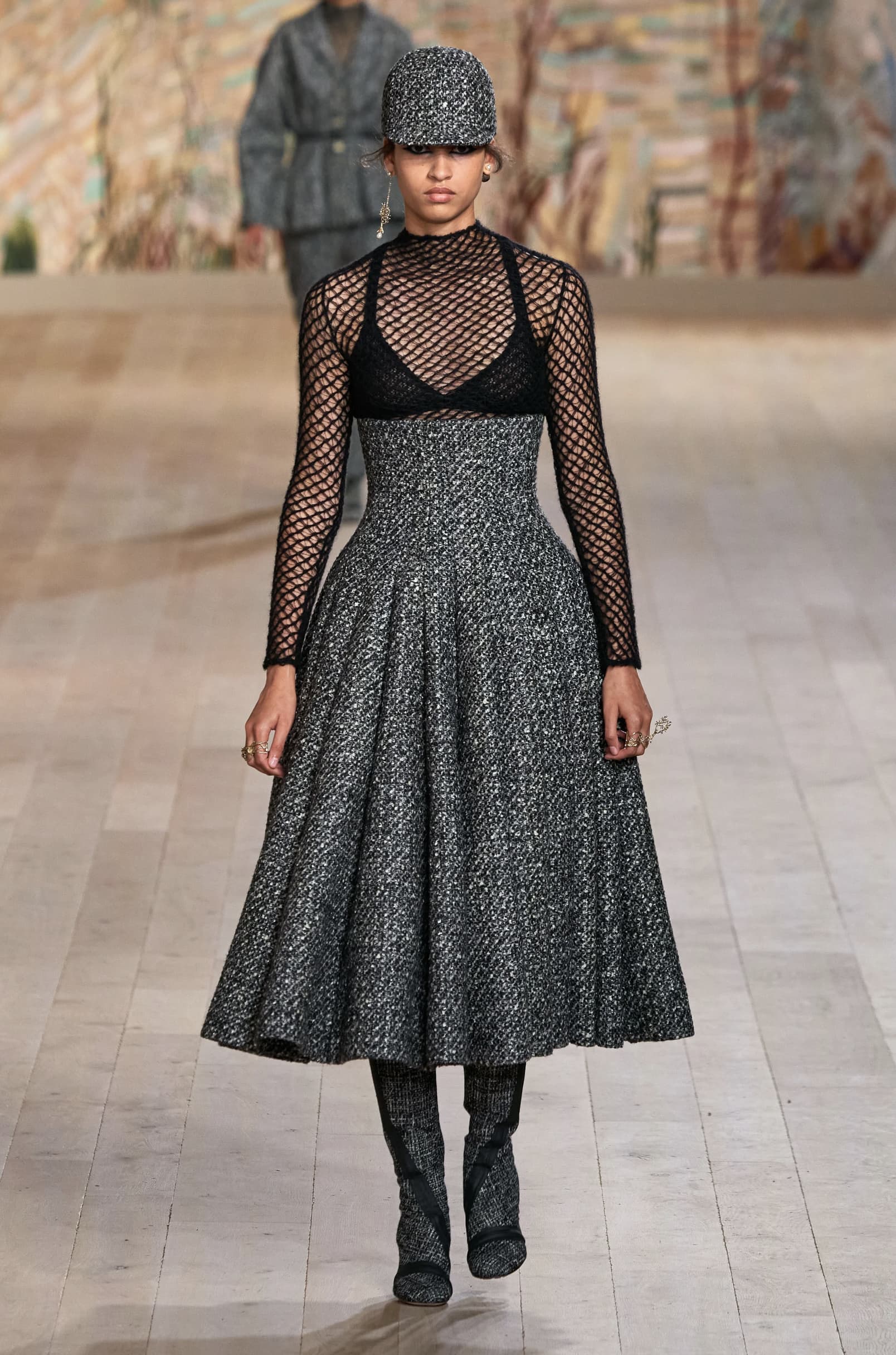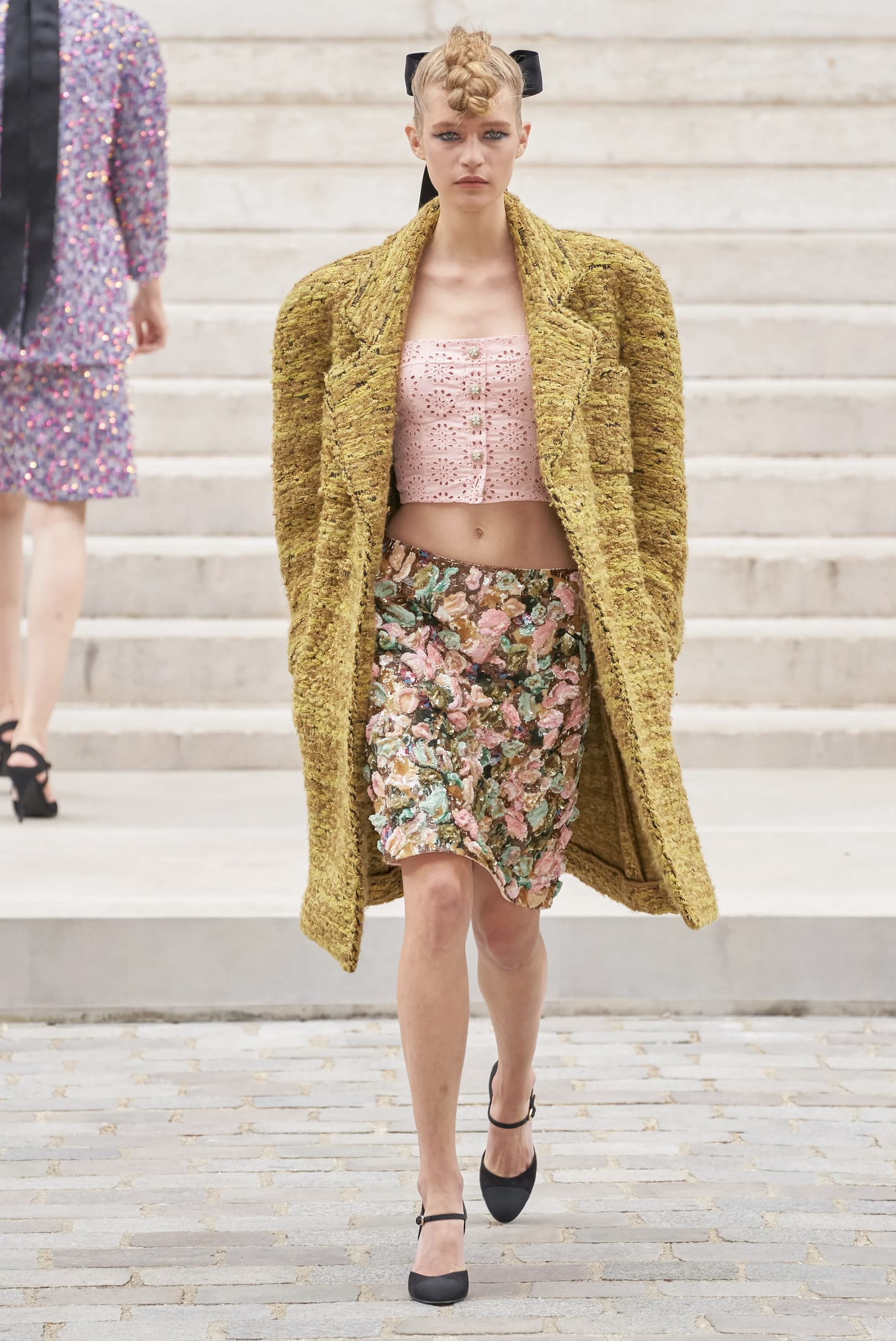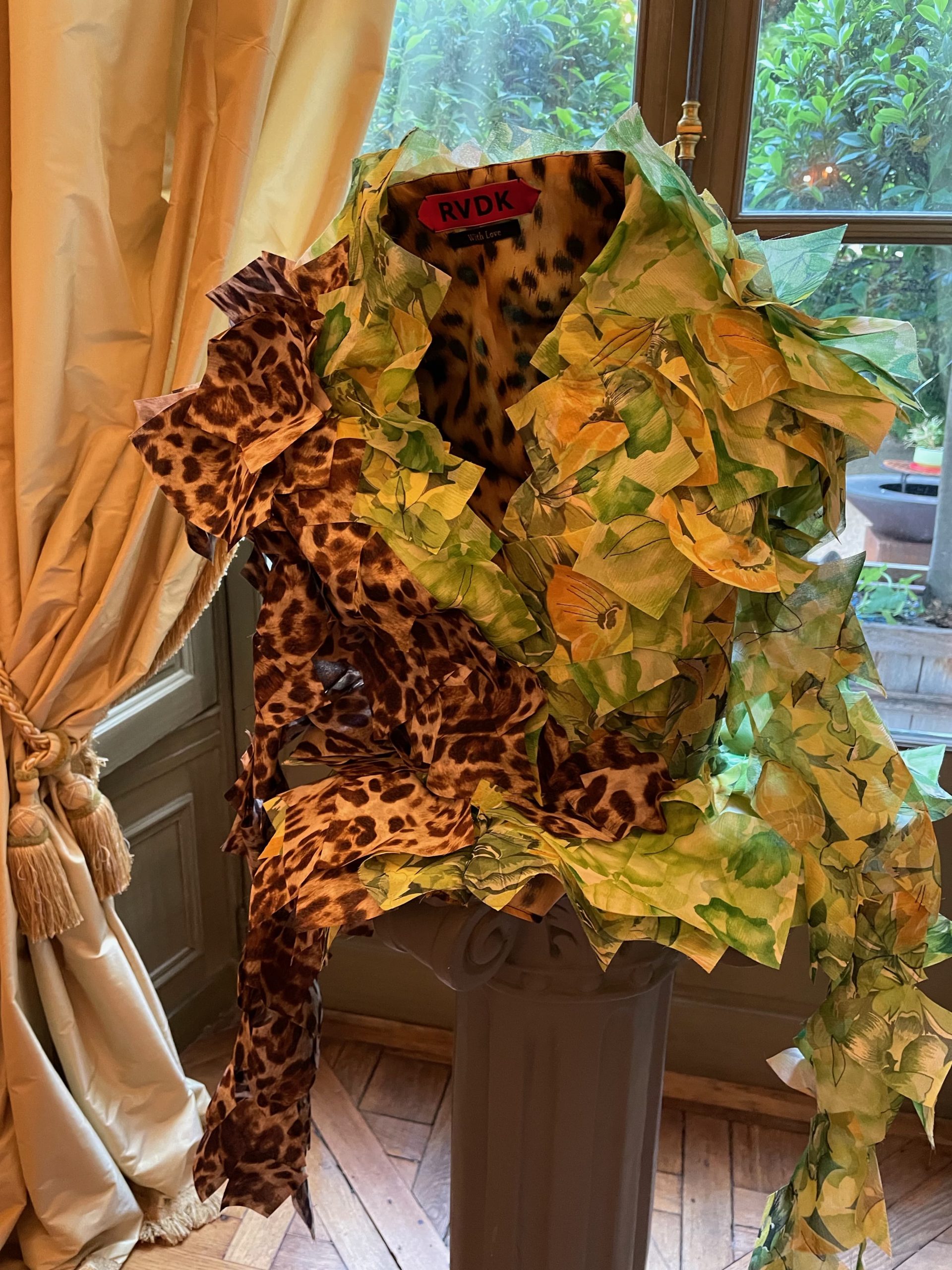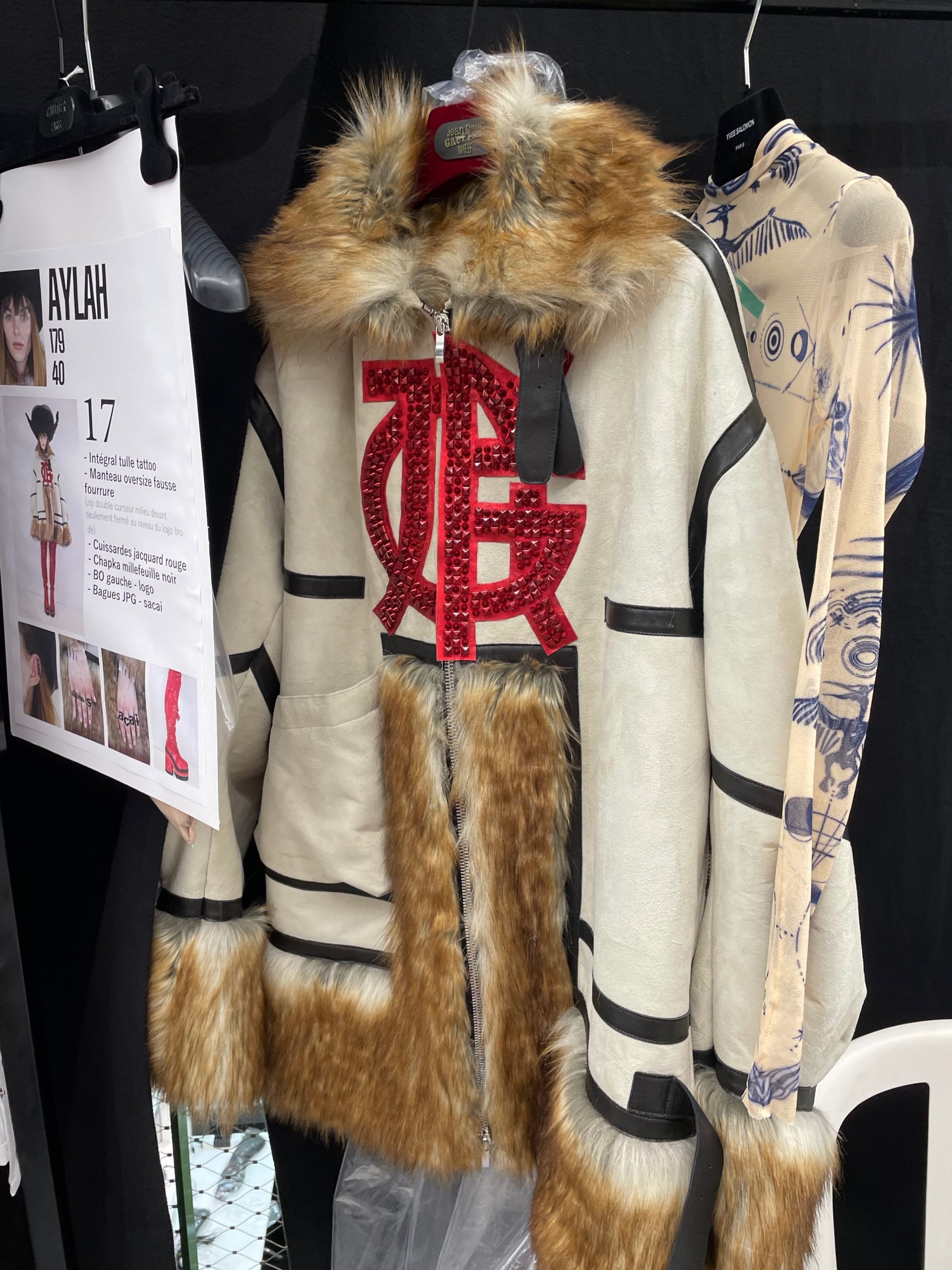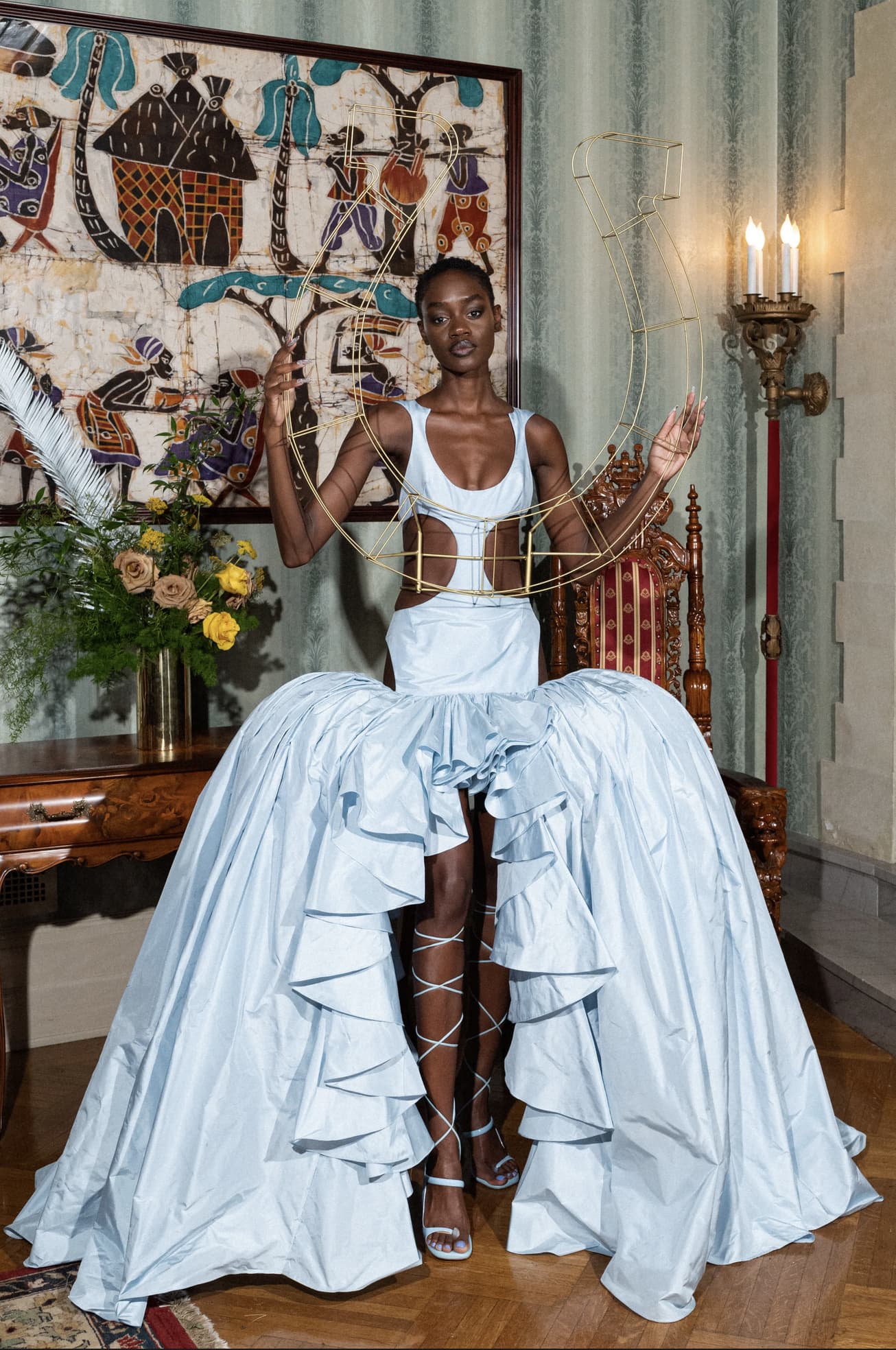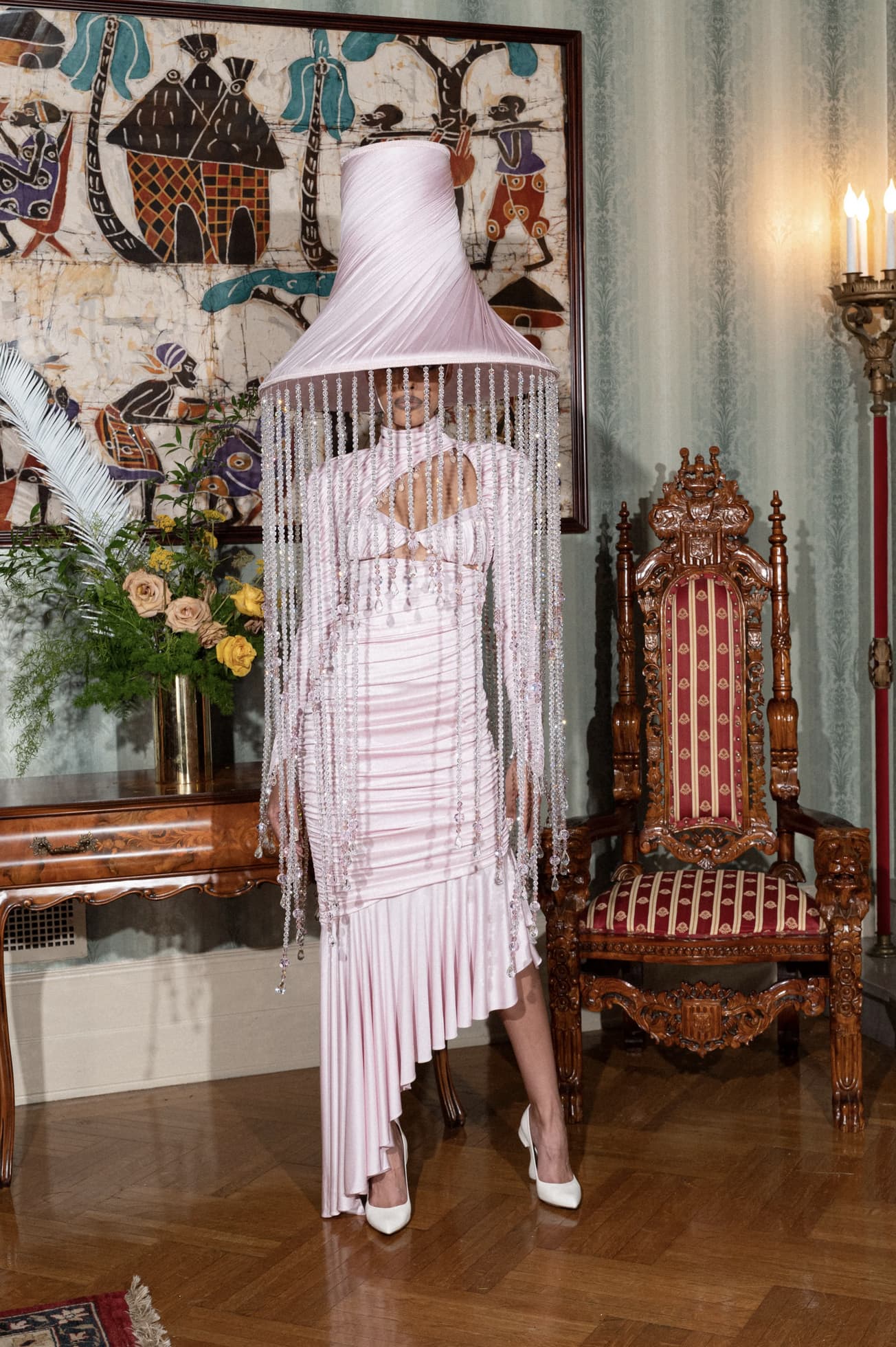Wrap-Up of Fall 2021 Haute Couture Fashion Show Season
In Paris and Elsewhere, The Epic Season Reckons Fashion’s Future with History
By Long Nguyen
The Paris haute couture Fall-Winter 2021-2022 season with physical shows that ended in Venice in mid-July was one of the most exciting fashion seasons in recent decades.
If anything, the pandemic year has strengthened haute couture in terms of elevating both the commercial determination and the realms of creativity that mushroom in these fall collections, composing the most mixed voices in fashion. Never before this Fall-Winter 2021-2022 season has haute couture been so central and so critical now to the landscape of the post-pandemic fashion era.
This Fall-Winter 2021-2022 season was when designers placed history at the center narrative to tell a new story – a new story for Balenciaga, Valentino, Chanel, Dior, or Pyer Moss – but freshly created tales draped with new ways of seeing heritage and legacy.
At this very challenging time for fashion both on the commercial and the creative sides, the haute couture fall 2021 season is a beautiful reminder of just how much fashion does matter or at least matter about the keen perception and reception of these utterly unique and at times overdone clothes. These fall haute couture shows galvanized fashion audiences globally demonstrate the allure of haute couture mindset and creativity at this time.

Armani Privé 
Chanel Haute Couture
Just nearly two decades ago in Paris in January 2002, the venerable French designer Yves Saint Laurent announced the closure of his haute couture from inside his grand Avenue Marceau salon.
“I tell myself that I crested the wardrobe of the contemporary woman, that I participated in the transformation of my times. For a long time now, I have believed that fashion was not only supposed to make women beautiful, but to reassure them, to give the confidence, to allow them to come to terms with themselves,” the venerable designer said that day in French. As an act of farewell, Saint Laurent showed a massive retrospective of his oeuvre a few weeks later, taking over the Beaubourg late that January. The end of Yves Saint Laurent marked a low point for couture that endured over many past seasons. Haute couture was surviving on life-support.
With the return of smaller-scale physical shows, this fall 2021 haute couture season feels a lot like the creative dominance couture was in the late 1990s. Then, the explosion of creativity from Jean-Paul Gaultier, John Galliano, and Alexander McQueen brought innovative thinking to Paris. Following that intermittent late 1990s era of hyper creativity, haute couture shows just went on seasons after a season-like precision clockwork with much less inherent magic.
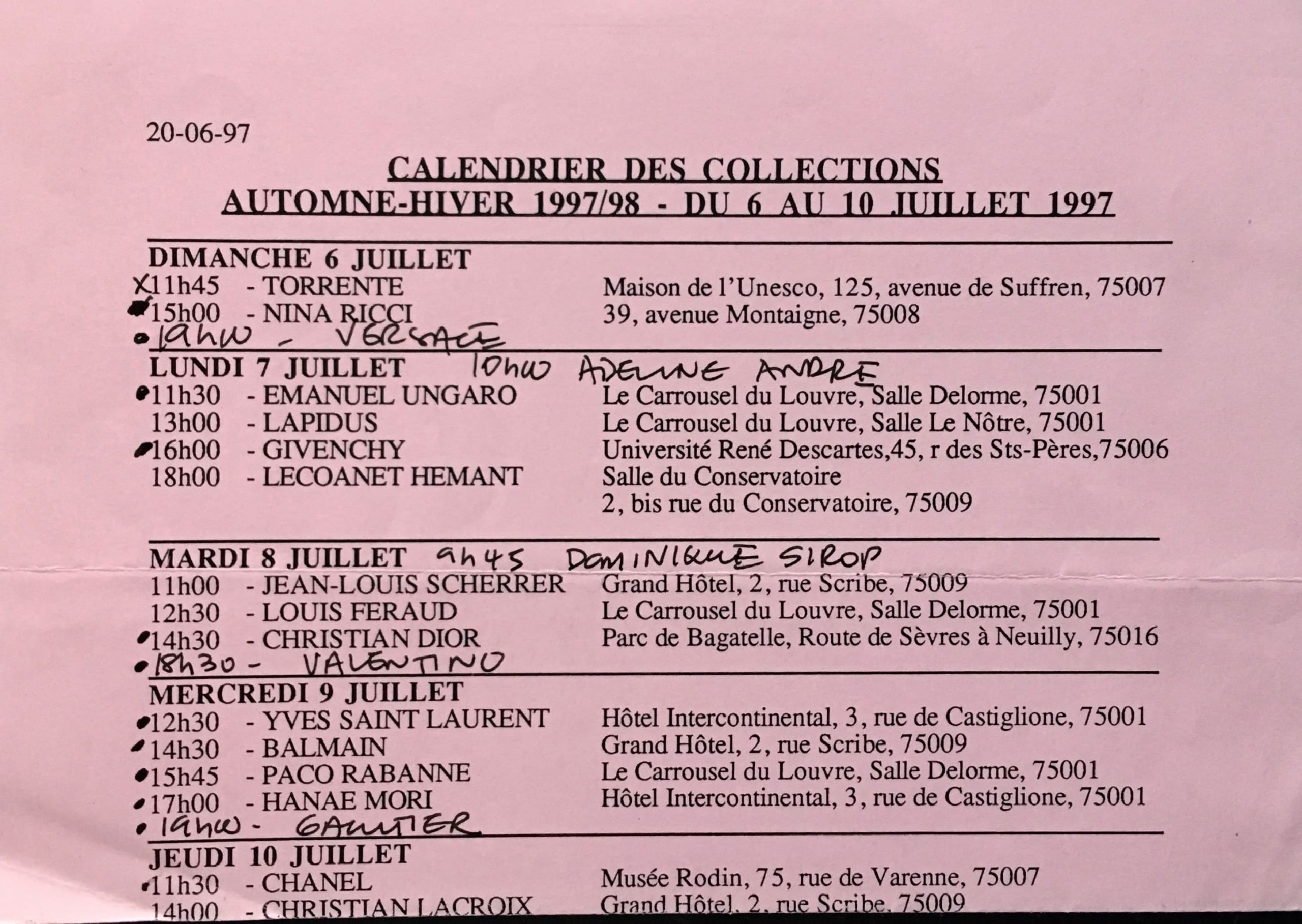
Photo | Long Nguyen Archives
Noticeable high notes were the Fall 2012 debut showing by Raf Simons for Dior. The new designer embarked on a journey to narrate a new couture language via clothes made in a modernist twist without abandoning the traditions of craft and heritage. And, there was that Chanel Fall 2017 couture show at the Grand Palais in custom-built Tour Eiffel incomplete replica where the designer Karl Lagerfeld experimented with slight oversize shapes around shoulders and sleeves of the house classic suits and coats.
Yet haute couture persisted even when obscured and perhaps at one point obfuscated by the rise of logomania of the mid aught. The attention of fashion was elsewhere. Even the great recession that started in late 2007 did not stop the houses showing couture. I remembered so few US editors came to Paris for Spring 2009 shows in January 2009, and the American section looked empty.
Due to a rainstorm in the Hudson Valley, the Pyer Moss show went on two days later than scheduled. Kerby Jean-Raymond, the Pyer Moss founder, changed the conversation around haute couture and who gets to show this form of specialized fashion. It is a happy ending and a new beginning to the many challenges facing couture in decline at the turn of the twenty-first century as Pierre Bergé summed up that mood than when he famously declared couture was dead. Sure, many French houses central to haute couture had vanished – Christian Lacroix, Emmanuel Ungaro, Jean-Louis Scherrer, Thierry Mugler, Torrente, Louis Féraud, and Balmain by Oscar de la Renta.
Demna Gvasalia at Balenciaga and Pierpaolo Piccioli at Valentino lead the creative rebirth of haute couture. Their fall shows singularly elevated this once deemed outdated fashion genre into the center of fashion design innovation and exposed the couture process as critical to fashion’s future.
In the last four seasons in Paris since his solo design journey since mid-year 2016, Piccioli has been the singular designer strengthening haute couture with his intensive focus on forging a new language for this specific fashion genre through his intense collection captivating the audience’s emotions. The designers ended each of the prior season’s schedules as the closing shows uplift the creative spirit inherent in the ebullient clothes.
On the piers waterfront of the Gaggiandre, the remnants of the shipyard built in the mid-1500s in Venice, Piccioli staged a daring show evoking the sense of freedom. Not just physical but also metaphysical in terms of the creative connections between talents across new art – particularly painters – combining with slow fashion aka couture in a cross-creation project of intense magnitude.
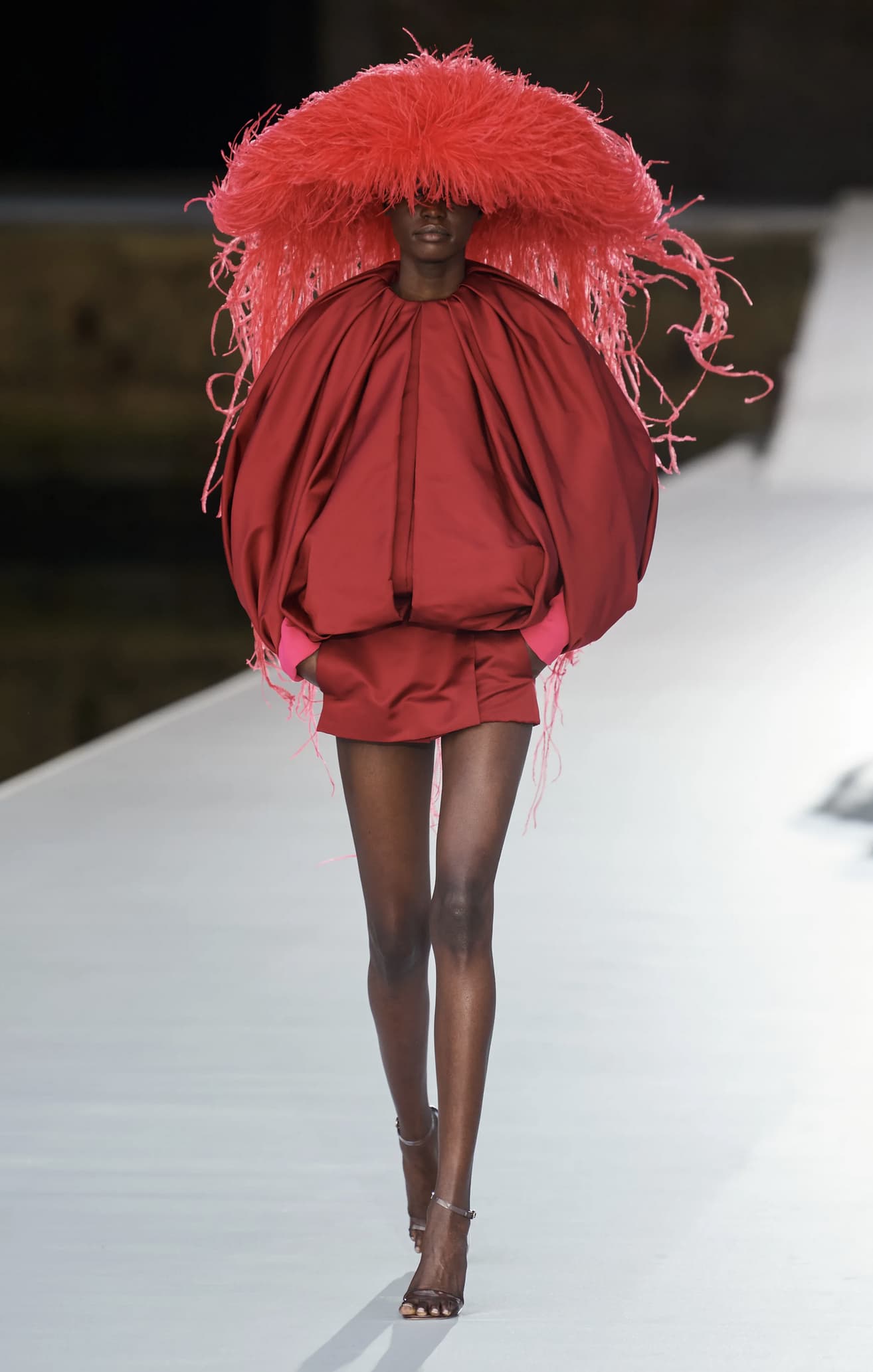
It isn’t just about the key players in the big leagues delivering substantive shows. As Piccioli pointed out, it is “the dynamism of conversations, the multiplicity of teamwork, always taking the side of talent” or specifically “the invention site.”
By putting his Roman atelier on the pedestal and praising their work as the critical blood vessels of haute couture, this show reminisced that Chanel Haute Couture precisely five years ago in Paris for Fall 2016. The late Karl Lagerfeld created a replica of the actual atelier located on the fourth floor of the brand’s rue Cambon headquarter as the stage set at the Grand Palais.
Back then, in a literal sense, the real artisanal work at the atelier – the drawings, pins, needles, fabric swatches, summary sheets, partially completed embroidered – became the raw materials to honor these work these petits mains. The actual artisans at Chanel also joined on stage while the models swirled around them in the clothes. John Galliano’s work studio layouts with toiles, embroideries and fabrics samples, fitting photographs, and sketches – the backbone of a couture atelier – became the stage for the Maison Margiela Artisanal Fall 2017 show.
Instead of putting the accouterments of the atelier on display, Piccioli’s Des Ateliers haute couture focused on the similar gestures of the hands that artists used to create a painting and these same hand gestures necessary to craft each of the couture outfit shown on the runway in Venice. Seventeen invited young painters worked directly with the atelier artisans; the result of their endeavors is visible only on the actual garments worn on stage.

What makes haute couture unique is the craftsmanship of these artisans and the petit mains at these ateliers. They are the spines.
“Fashion is not ‘art’ because the latter has no purpose outside of itself, while the first always has a practical scope, a function, a use. Acknowledging differences is the first step in educating ourselves towards a mutual listening, made of curiosity, enthusiasm, and respect,” Piccioli said.
Two gestures merged into one garment, not the simple idea of reproducing the artwork onto clothes. Here the Roman atelier craftspeople work directly with the artist to render brush strokes into lively compositions on multiple layers of fabrics that only haute couture can deliver. “It is, therefore, a translation between different languages, a complex and delicate passage between the two-dimensional nature of painting and the three-dimensional one of fashion.”
The If, 2010 by the German visual artist Kerstin Brätsch now transformed into a rose mohair pull and silk crêpe dress with intarsia of 45 kinds of fabrics. Black sequins and French bows in padded black silk highlighted the effects of fusion and overlapping on the painting. Samanta V. and Federica P. are the two atelier petit mains making this particular outfit. The ivory strapless technical duchess satin ball dress with over intarsia of one hundred fabrics then apply with micro draped elements to simulate the painting brushstrokes is a combination of five of the American abstract artist Patricia Treib paintings from 2014 to 2020. MariaSole, Fiorella, Lidia, and Maria C. spent over 630 hours of handiwork, using 140 meters of fabrics and 88 different cloths to bring the dress to life.
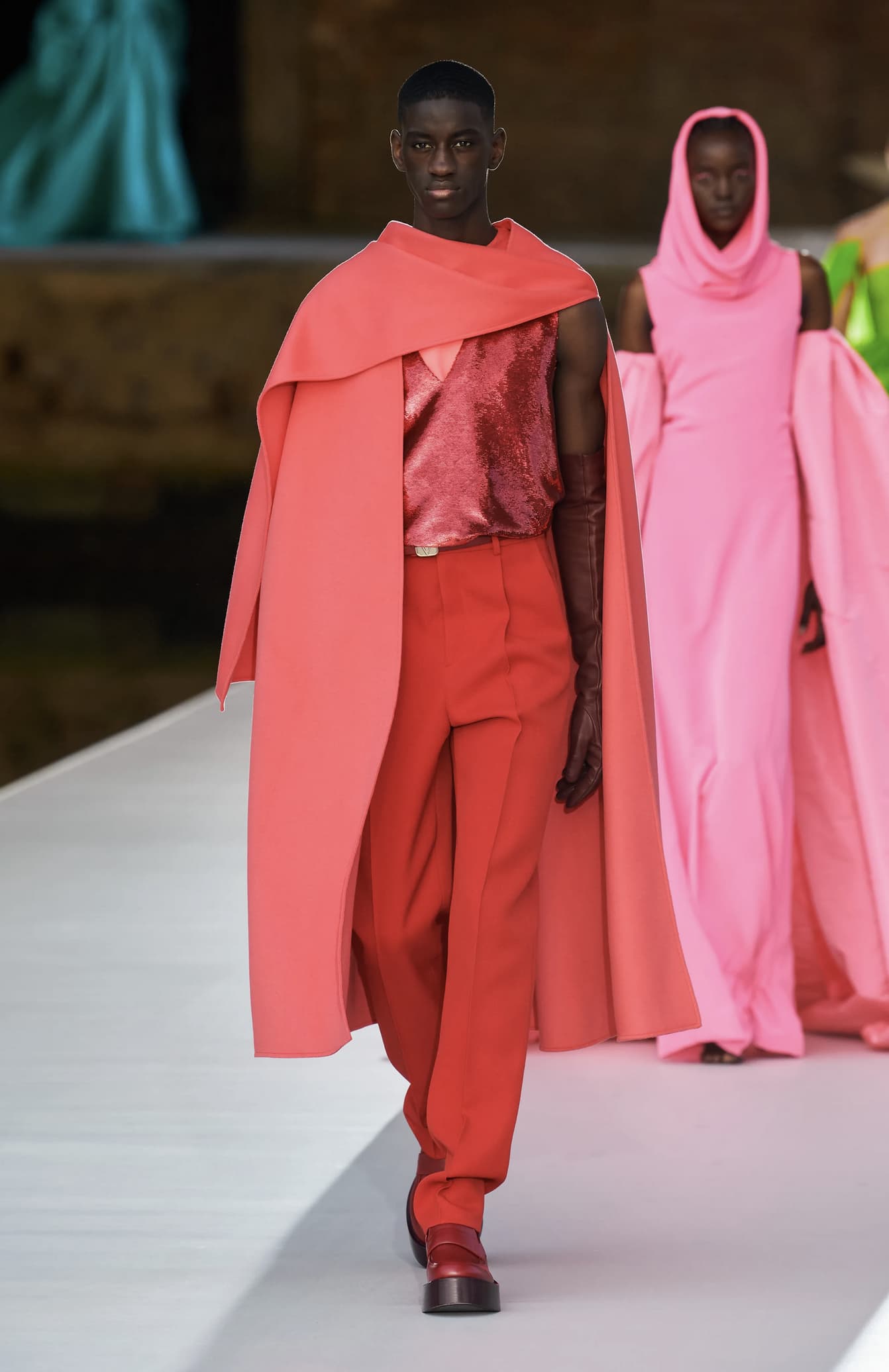
Both art and haute couture fashion require time, an element of the slow pace Piccioli embraced. You can see this slow speed in the magnificent alignment of colors from cocoon to ballooning shapes. You can see how each of the garments fit around each of the model’s bodies, as couture means individualized clothes made for this body only.
And the British singer Cosima performed powerfully, opening the show with a rendition of the song Calling You originally from the 1987 movie Bagdad Café as models strode out in deep wine cocoon bubble dress and giant feather hats atop with fringes of feathers dangling in the air.
“The re-launch of the couture line will offer the highest creative and qualitative level of product to our customer. As well as complete my multi-layered vision for the Balenciaga brand, which ranges up from streetwear into conceptual fashion and wardrobe and ultimately into one-of-a-kind, made-to-measure couture pieces,” Demna Gvasalia said of his intention in showing the 50th collection on pause since 1968.
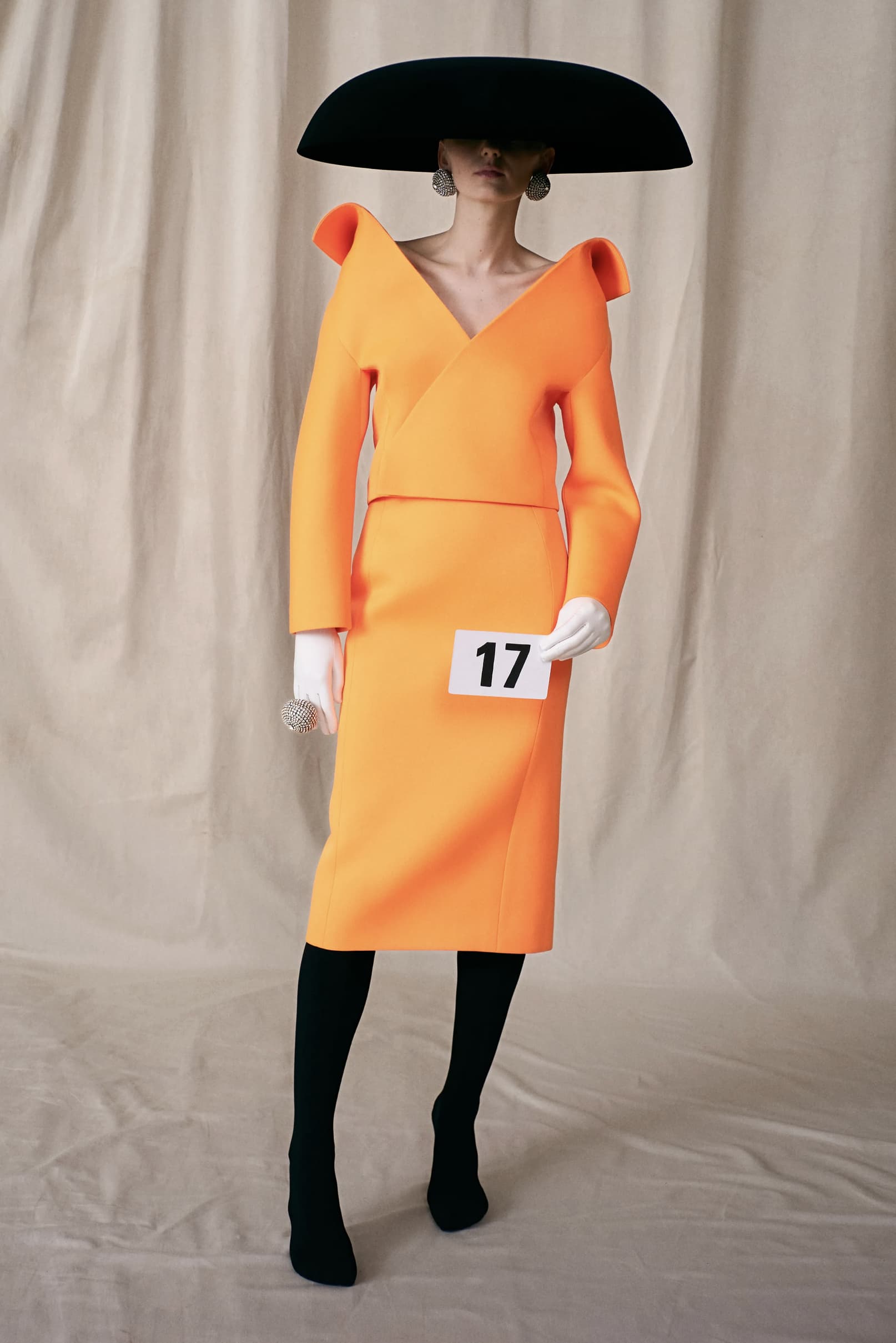
Gvasalia retained the house’s heritage of architectural fashion but evolved and reimagined these shapes into different reactivations into these new garments. The fisherman smock from the 1950s became now a light orange skirt gabardine suit with the open neck and back jacket, a long black coat with a long train and a hood, or a handmade tracksuit.
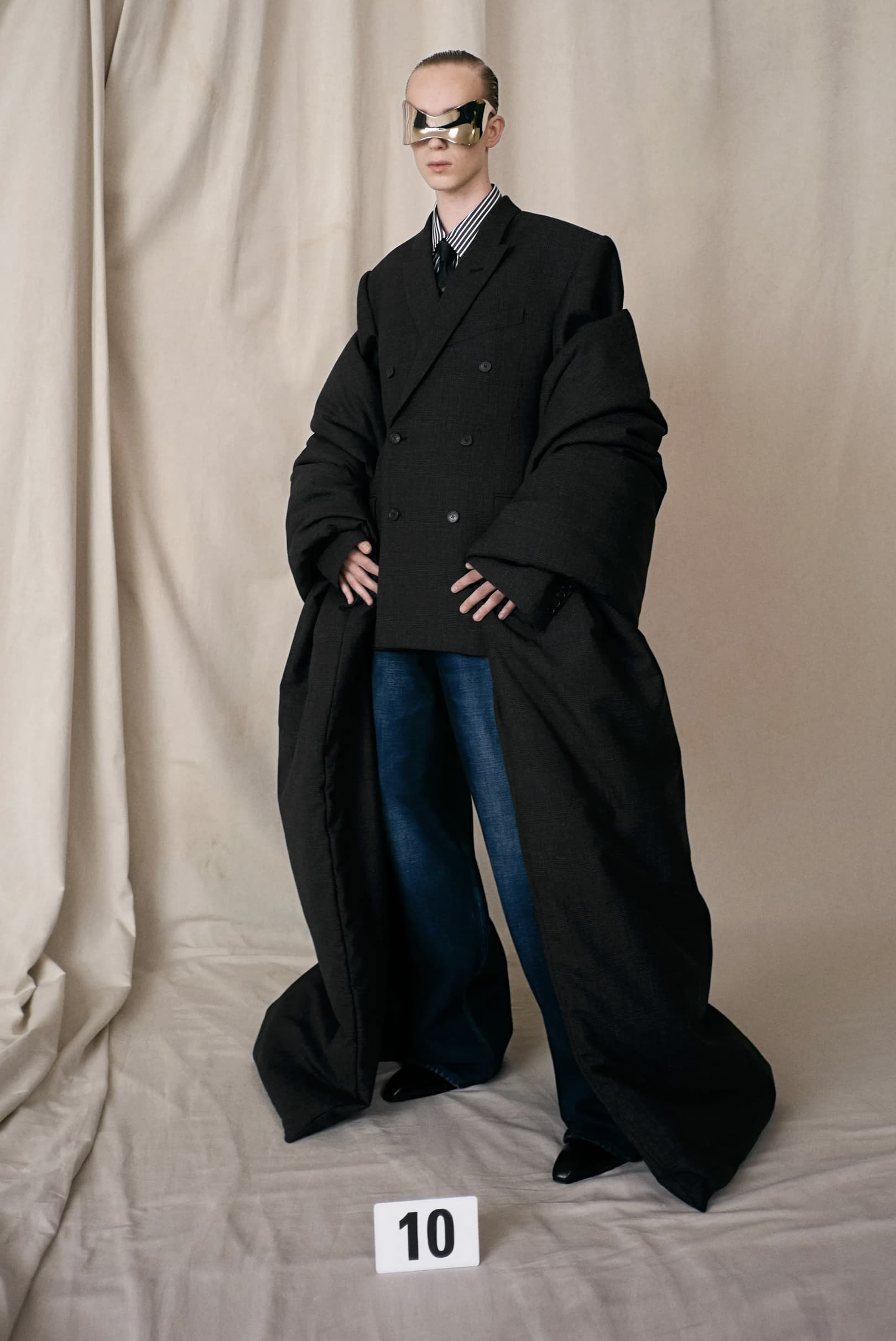
The designer put technology at the forefront of his couture materials like fine silk threads posing as feathers, laser-cut leathers as terry cloth in robe coats, and technical wool on the structured jackets or leather tiles hand patchwork as trompe l’oeil for alligator skin. Even a black satin tee shirt with elbow flute sleeves and raised neckline transform an everyday garment into grand.
The black tailored jackets and coats owed their oversize shapes to subtle but complex and invisible work of corsetry or reinforced undergirding, holding up the space from where the jacket shoulder rests on the human shoulders allowing the garment to hold their silhouette in place. The pink, red, and green taffeta giant coat/dress with protruding sleeves are crafted with mechanical precision using minimal and strategic seams and hand-molded paddings to guard their specific shapes. This imperceptible balance of structural support and delicate draping is the fulcrum of haute couture.
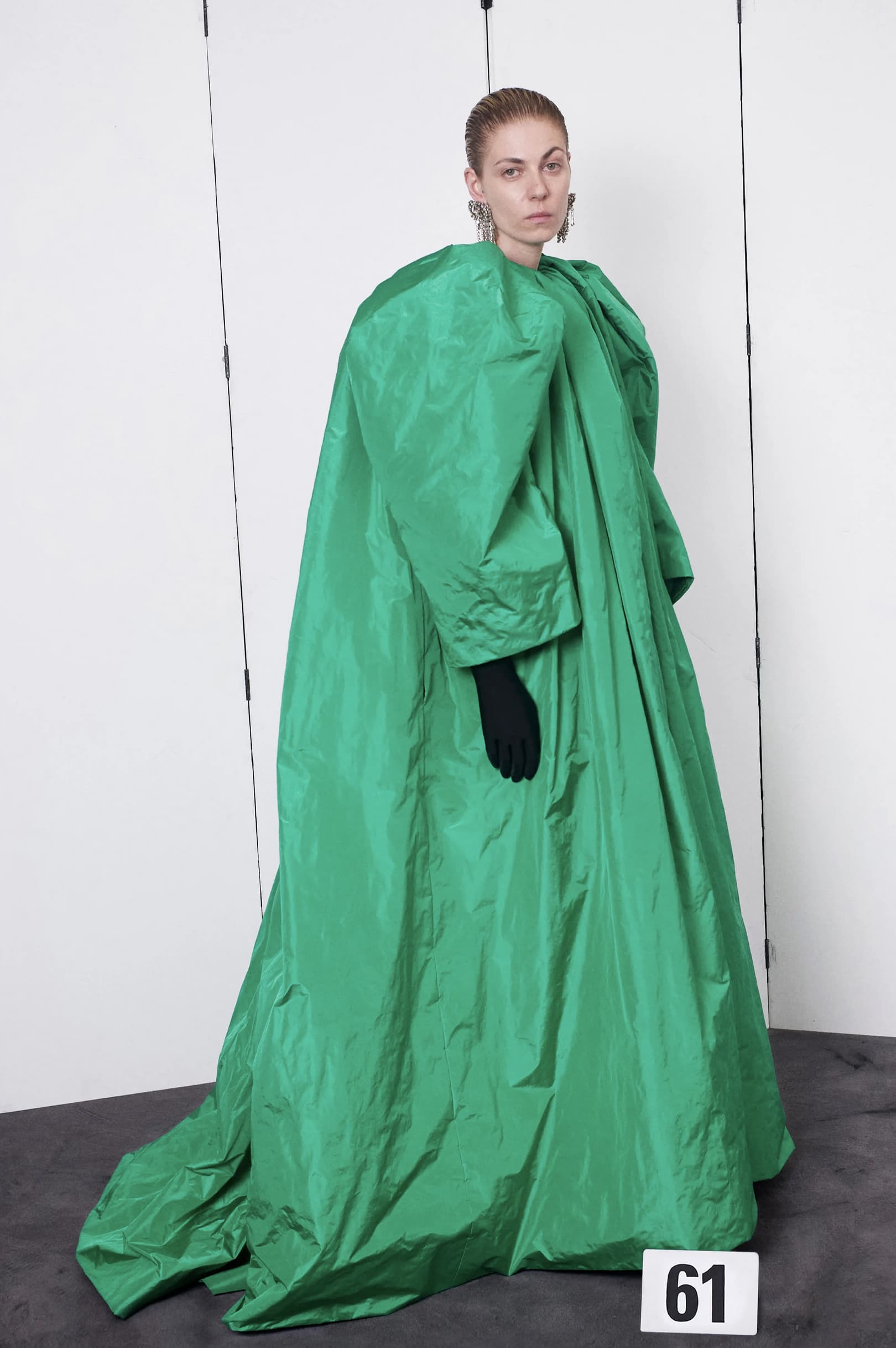
In different manners and tactics, both Piccioli and Gvasalia are creating a new language and a unique setting for haute couture expanding and modernizing the heritages of their respective houses founded deep with couture at a time when it mattered. Cristobal Balenciaga approached his fashion with the rigors of a strict intellect, questioning shapes and cuts to the body. At the same time, Valentino Garavani opted to provide women with the ultimate pleasure and sensuality of sumptuous clothes.
This dichotomy of intellect and emotion is apparent in how the heirs of both venerable fashion houses – Valentino and Balenciaga – brought new discourses from both sides of the aisle, providing the depth of thinking and the distillation of the emotion to the forefront with their stellar Fall-Winter 2021-2022 couture collections.
The lush colors at Valentino – red, mulberry, cocoa, aubergine, purple, hot pink, chartreuse, leaf green, teal, and yellow – encapsulated a collection of sexy clothes in multiple silhouettes. From a violet wool turtleneck cocoon coat-dress to a taffeta teal dress with exaggeratedly enlarged and folded sleeves with fabrics seeming to peel off the body.
Photos | Long Nguyen Archives
In contrast at Balenciaga, the compact black gabardine and silk-wool blends matte finish oversized and structured double breast suits and vicuna turtlenecks and the orange open back v-high neck jacket skirt suit signaled a careful balance of the architecture of the garments with that of the body, using a range of fabrics enhanced by new technology.
So is haute couture, the light pink cashmere sweater over green hot shorts with fold trims and ecru ostrich feather hats seen at the Venice waterfront.
“This is the first haute couture collection that has a live audience. I wanted to concentrate on reclaiming the idea and the value of haute couture through the materiality of the handiwork. This process started with the yarns becoming the fabrics, cut by hand into dresses and coats. The shapes are silhouettes that connect to the senses of sight and touch,” Maria Grazia Chiuri said backstage before her Dior Haute Couture show in the tent inside the gardens of the Musée Rodin.
By tactile, Chiuri meant clothes with sufficient volume from the special cutting techniques and made from woolen yarns woven by hand. The grey wool tweed fabrics of the Bar jacket and cigarette pants and the high waist bubble skirt paired with a black bra and black sheer tulle long sleeve tee shirt opened her show against the wall decorated embroidered art piece by Eva Jospin. Chiuri connected the initial suppliers who made the yarns to the final fabric to the atelier cutting the jackets and dresses as part of the broader fashion ecosystem now capable of couture production in a renewed manner.
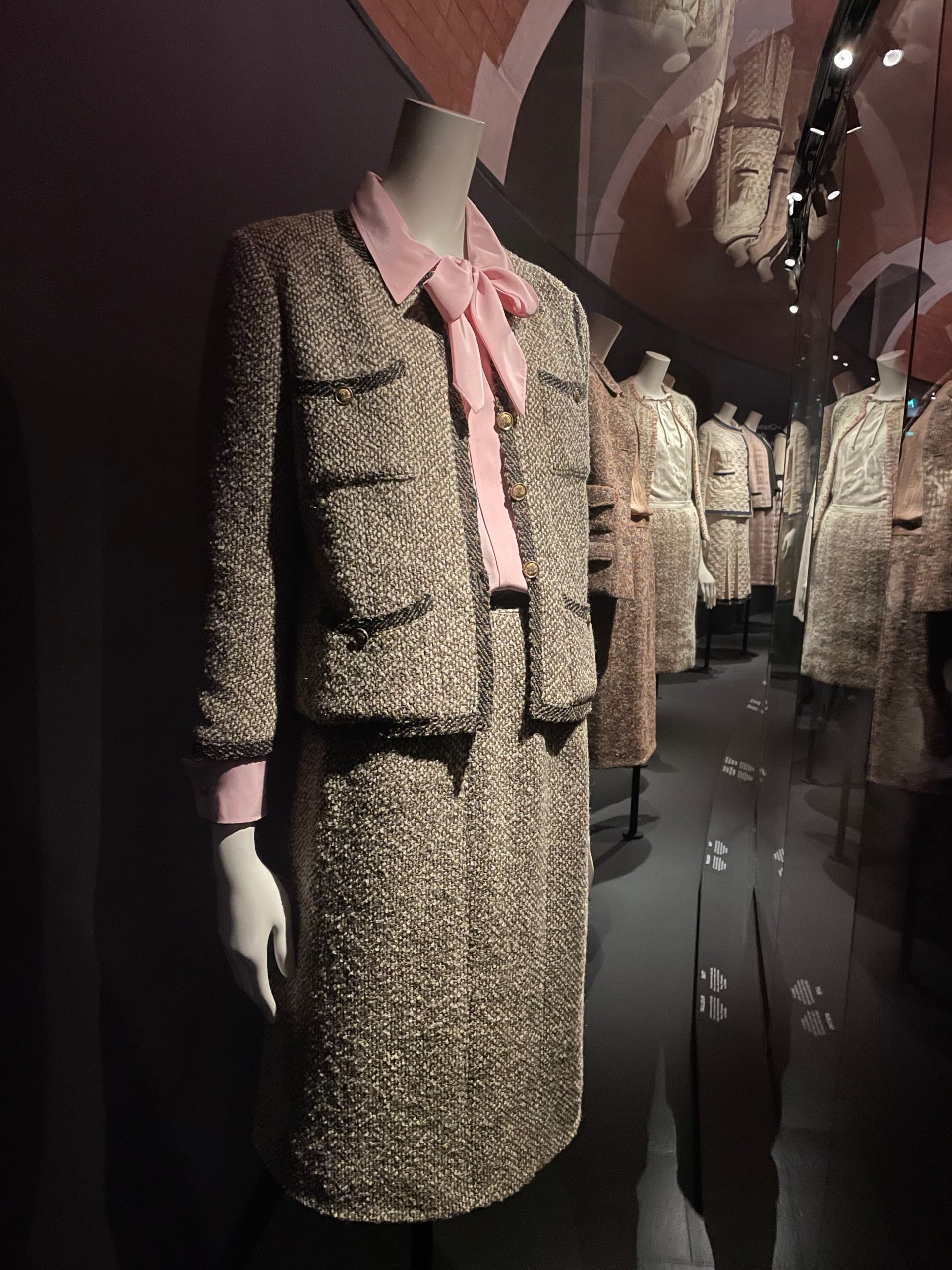
Photo | Long Nguyen Archives
The unrecognized ingenuity of Virginie Viard – the artistic director – work at Chanel since taking command of the creative direction in early 2019 has been her deep understanding of the Chanel brand. Under her design directives, the Chanel collections have always veered into the familiar territory that the brand owned – the classic skirt suits, the day and evening dresses, and a range of great accessories to match. The show emphasized the details very much how one would look at the historical clothes on display inside the Paris fashion museum.
Staged at the courtyard of the Palais Galliera with two rows of socially distanced chairs, Viard showed a focused collection with colorful English gardens embroideries on the cropped tank under oversized coat and jackets and lighter evening dresses, a show that was uncharacteristically Chanel. The designer is clearly on firm ground, supported by the extensive heritage inside the museum with the unique exhibition Gabrielle Chanel – Fashion Manifesto showing only the retrospective of the founder’s work. The show of new couture clothes was grounded firmly within the Chanel fashion legacy, and a legacy continuously renews each season.
Before seeing the fashion show, viewing the exhibition made it easier to see how Viard’s new Chanel is that subtle mixture of novelty with the familiar. Like the clothes shown in many galleries inside the Palais Galliera, this couture collection is very Chanel, not very different but not the same.
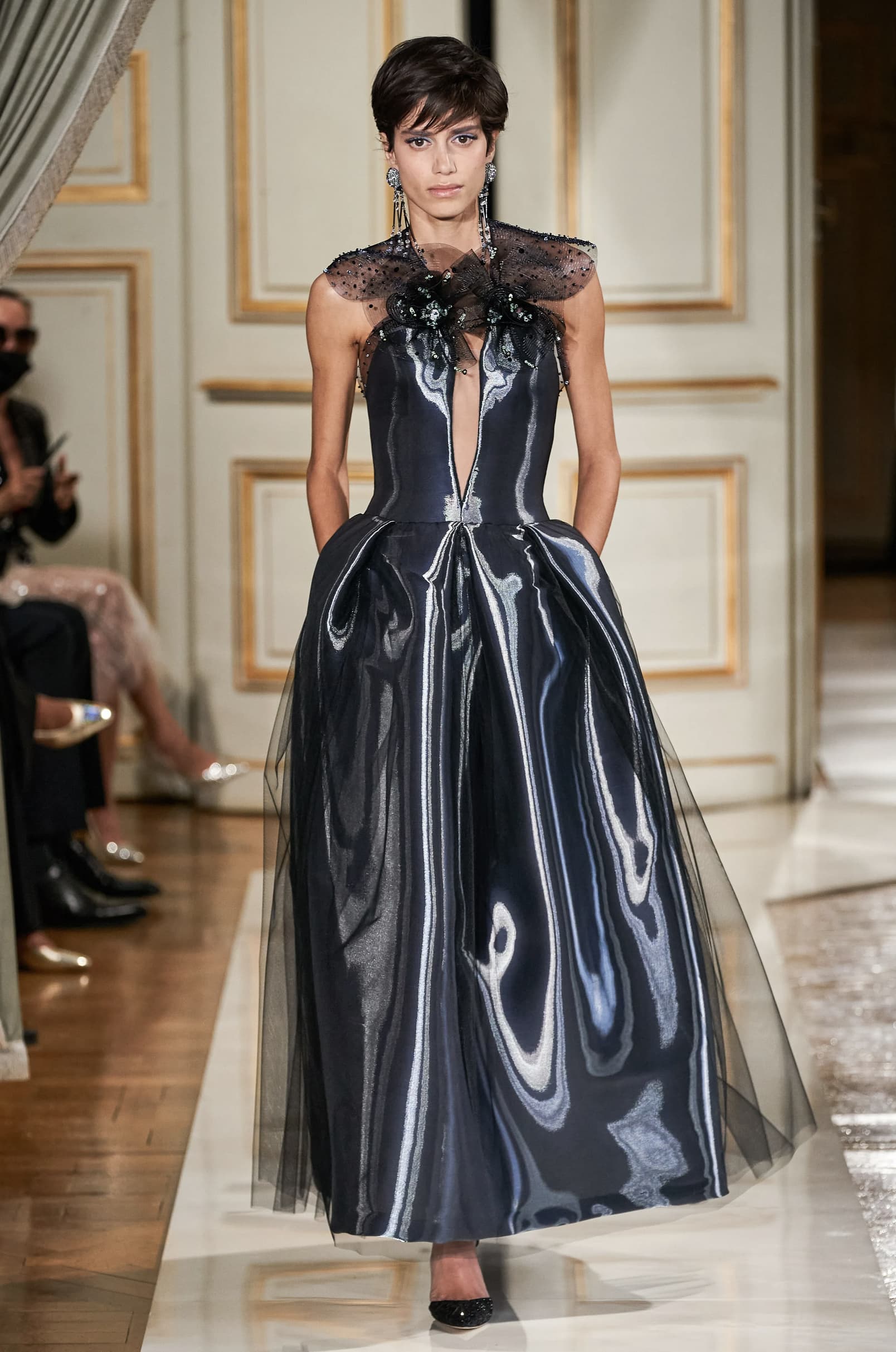
At the Italian Embassy on the rue de Varenne in the posh 7th arrondissement, Giorgio Armani took his advice to slow down fashion to heart. His Privé collection shows the concision design by bringing back to the small runway offers a few looks from his Spring collection virtual show. Most of the clothes shine due to the reflective fabrics on loose pants shown by various black jackets – an Armani territory – and even on light pink fluid long mercurial silk organza dress with a cropped bolero.
But, the idea at Armani Privé of seasonless couture is relevant here and perhaps should be elsewhere. At Armani, there is plenty of heritage and owned history.
The absolute craftsmanship of the Roman atelier in using its vintage furs as prime materials for the intricate intarsia mimicking the floral and the patterns of marble of the historic Palazzo della Civilità did little to mask the real problem at Fendi. It is the lack of a defining the idea of haute couture for the house at this moment in time.
Photos | Long Nguyen Archives
Fendi staged its first couture show in Paris for Fall 2015 at the Théatre des Champs Élysées. Karl Lagerfeld’s haute fourrure collection was a demonstration of the new craft treatments of furs, which is Fendi’s specialty. The show was more a piece of resistant theater in a war against the use of furs, not just by the perennial PETA, but by younger consumers no longer espousing pelts. Prada, Gucci, and many luxury brands have since abandoned any fur products to align their brand values to the tenets of these youths, now fashion’s prime luxury audience and spender.

In this setting, Kim Jones – the womenswear artistic director – second couture collection at Fendi seemed much more irrelevant to young people even with the elaborate work with dead stock furs intarsia into precisely cut geometric and floral patterns. Perennial model stars like Kate Moss, Christy Turlington, and Amber Valetta st inarred a short film by Luca Guadagnino instead of a crop of fresh young faces. In addition, the silhouettes of these fall clothes, like a sleeveless embroidered long layered dress cinched at the waist, aren’t exactly the kind of shapes preferred by the kids.
The central question at Fendi Couture remains whether the brand can evolve its heritage crafts in furs to other fabrics, and even more critically can harness a powerful aesthetic direction necessary for innovating the couture fashion of this Roman house for today’s audiences.
Young designers are steering haute couture on a rapid course towards embracing different points of view and adopting different manners of creations. In the many in-person appointments during this fall season hybrid Paris schedule, something else was really in the air at the showrooms and studios scattered around the city. These designers are busy building their history and busy offering these new tales to new audiences.

Photo | Long Nguyen Archives
Julie de Libran stood in her living room holding up a black chiffon dress with black embroidered beadings she said she had inherited from her grandmother. Now, she has added a tiny shoulder cape and reinforced the beadings with the help of the students at the L’institut Marangoni, the Paris location of the Milano fashion school where de Libran said she is currently a ‘godmother’ to the kids learning the intricacies of fashion design. De Libran’s small limited edition collection, literally on two small rolling racks, further testifies to a new business structure for emerging indie brands.
“I have not bought any new fabrics in several years,” the Dutch designer Ronald van der Kemp said. He stood in front of a grand staircase at the home of the Netherland ambassador, complete with a black dress laying over several of the red-carpeted steps leading to the upstairs residence.
Surely van der Kemp did not need to buy new fabrics to create his unique garments, all made from recycled and repurposed materials in this era of overconsumption and excessive production. An embroidered denim jacket in the floral pattern is made from interwoven ultra-thin strips of old jeans or a light blue short coat recast from denim to look like furs. A long dress made from circular chain links from recycled felt textiles trash, a short black dress from old black laces, and sparkly grey fringes from old curtains.
Photos | Long Nguyen Archives
In van der Kemp’s handiwork, these couture garments are just as glamorous as anything crafted from brand new materials.
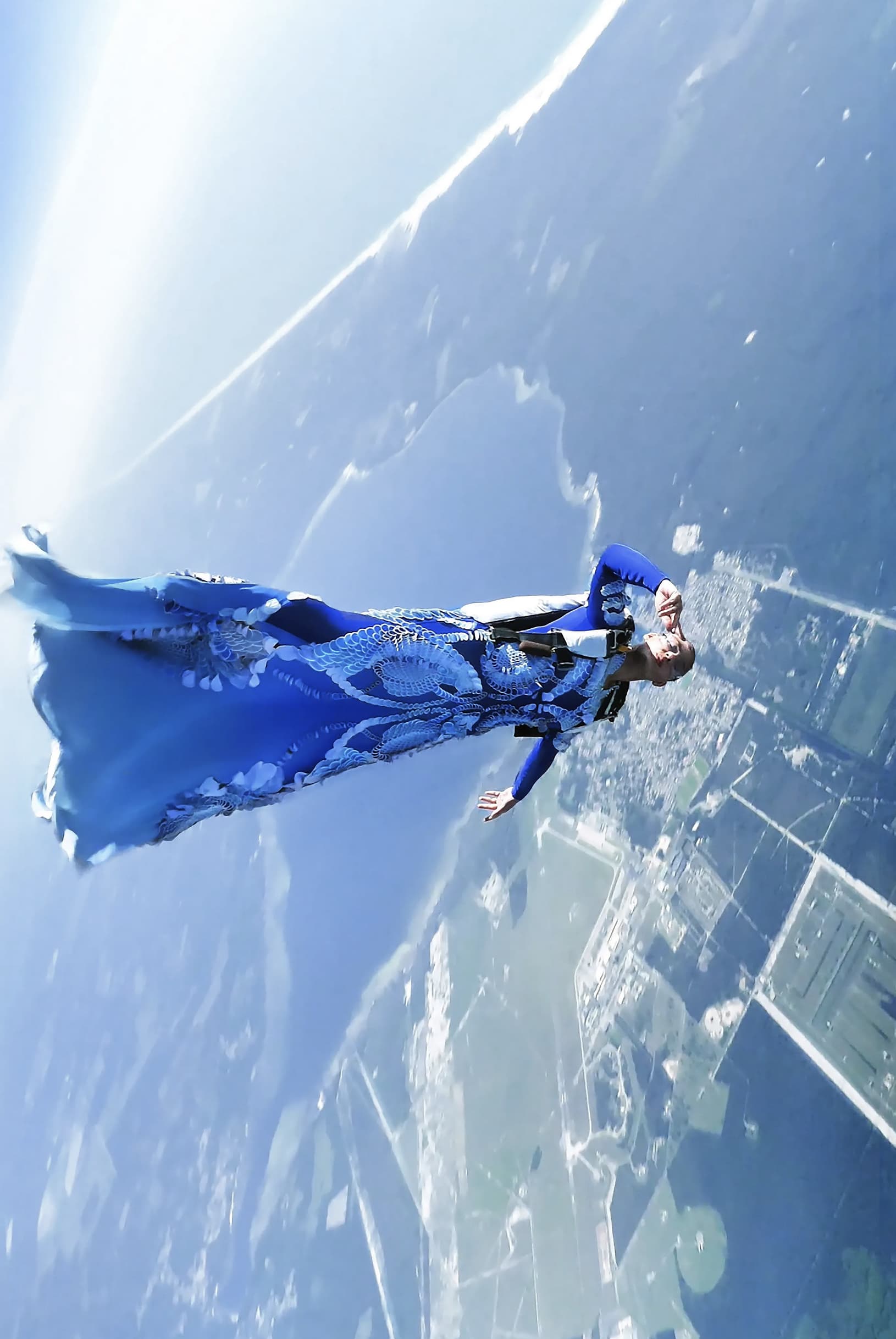
Iris van Herpen has pushed couture to the forefront of experimental technical materials and innovative shapes for over a decade. First to use 3D printing in couture garments, the Dutch designer expands the horizon of couture clothes.
Now, she worked with Dominique Kiger, the French world champion skydiver, to stretch further how material durability can withstand the stress of a real sky jump wearing the long patchwork blue silk and nylon tech fabrics. As a nod to her continued support of cleaning up the oceans, van Herpen worked again with Parley for the Oceans, deploying the recycled plastics into sculpture dress with the artist Casey Curran.
Chitose Abe of Sacai is the first designer invited to interpret the Jean-Paul Gaultier heritage. She did her best to splice and recombined the Frenchman penchants for pinstripes, corsets, white and blue stripe sailor shirt, tartan, and ethnic clothes like a Mongolian shearling coat from the Fall 1994 collection now done in faux fur. This collaboration was how one designer sees and interprets another fellow designer’s fashion history.
Photos | Long Nguyen Archives
During four days couture show week were special presentations from Charles de Vilmorin in a debut all inventive black shapes collection, a departure from his usual painted kaleidoscope of colors. In his quiet way, Giambattista Valli’s distilled his signatures built over a decade into light tulle cocktail dress with sweeping floor tails and plumed sequined long column dress. Valli’s aesthetic precision this time extended to a few of his men’s offerings, like a white plume shirt under a black wool cape and pleated pants.

Charles de Vilmorin 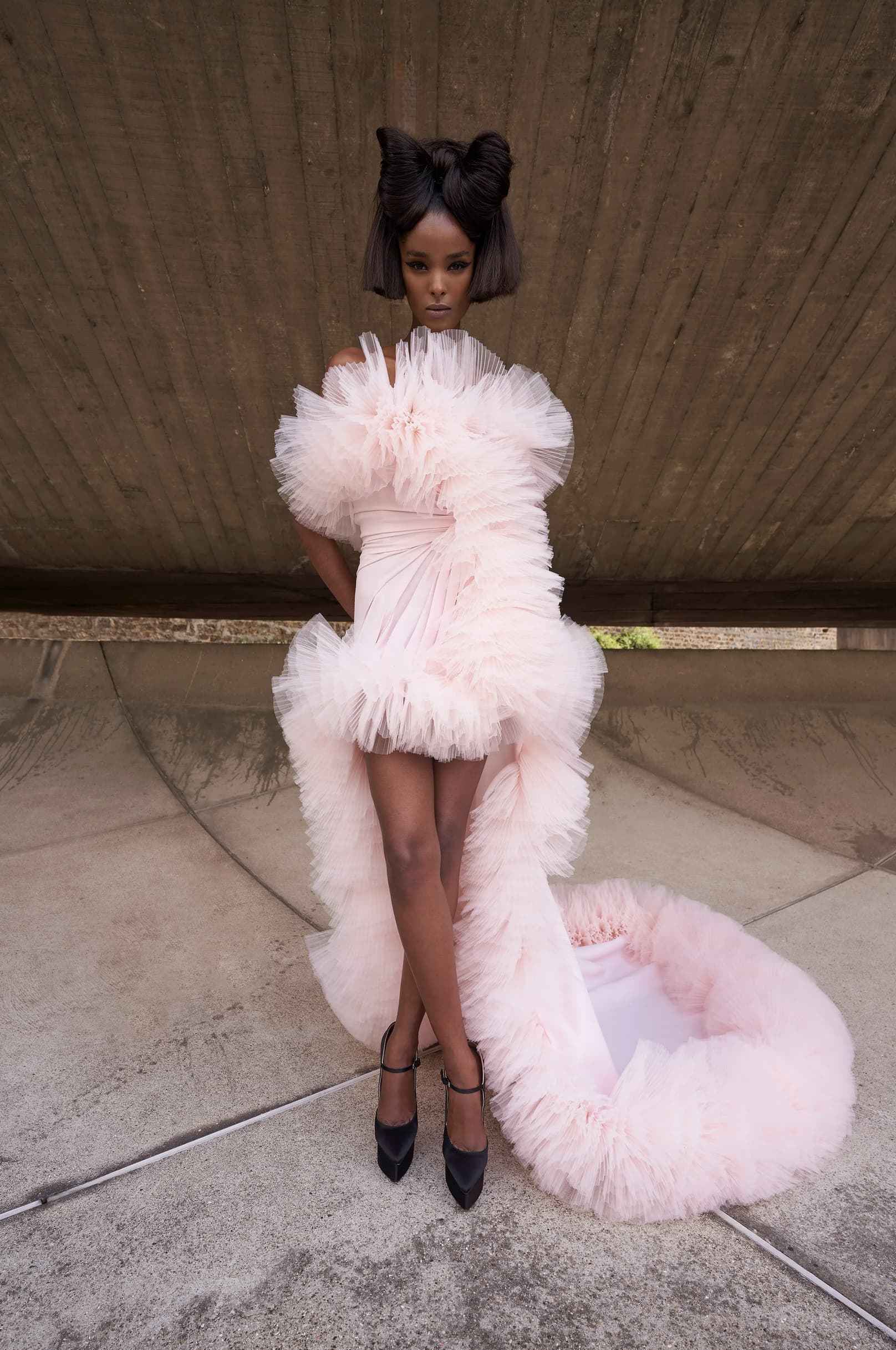
Giambattista Valli Couture 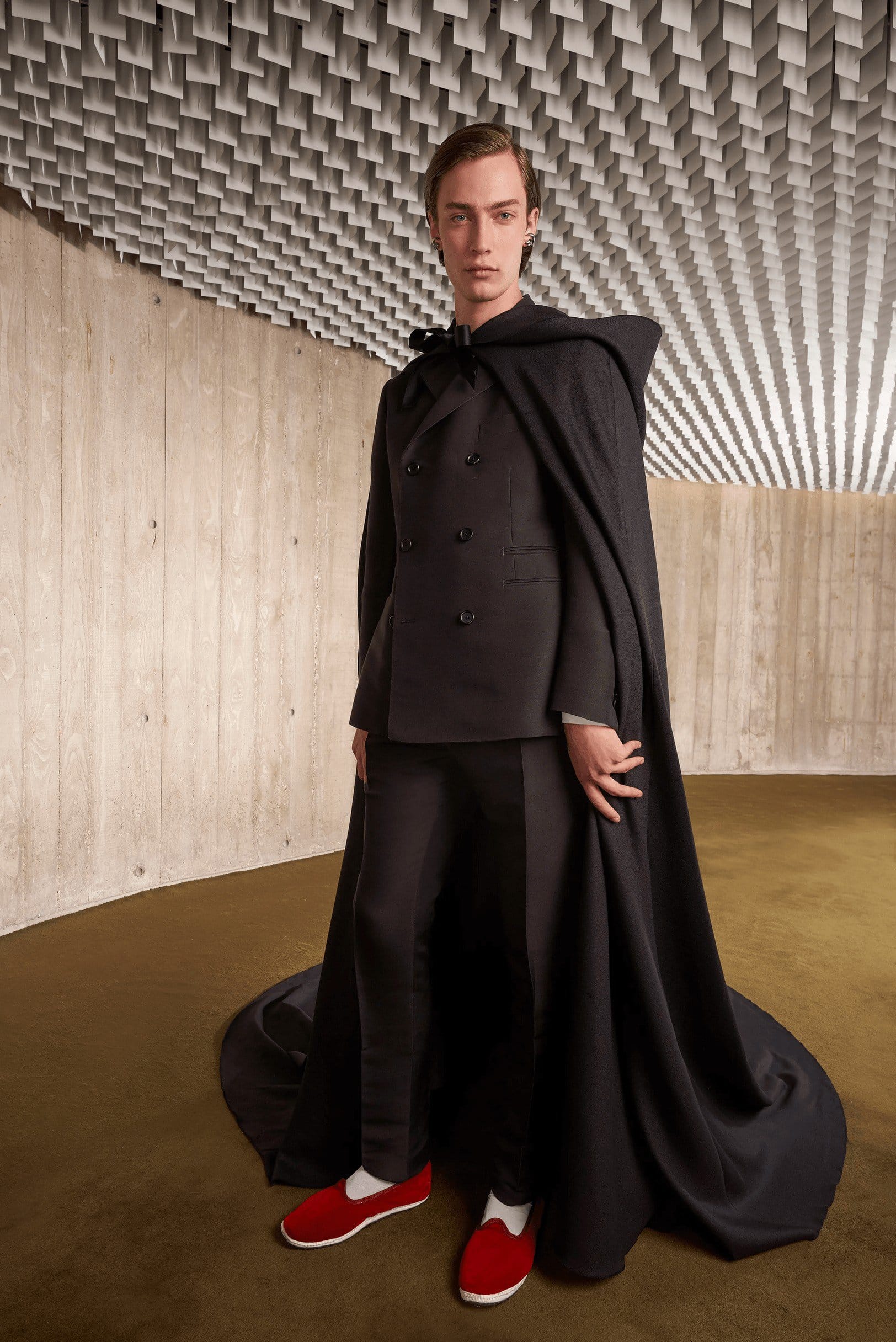
Giambattista Valli Couture
The same can be said of Alexandre Vauthier’s all-black collection of his usual hyper sexy clothes because black is the essence of French elegance. The American designer Daniel Roseberry proceeded with heightened adornments and over-decorated clothes at Schiaparelli, showing he clearly understood and espoused the flashy side of fashion. And Olivier Theyskens is sharpening his couture skills at Azzaro with his new concoctions of sparkling silver pantsuits and extra high slit asymmetrical party dresses.

Alexandre Vauthier Couture 
Schiaparelli Couture 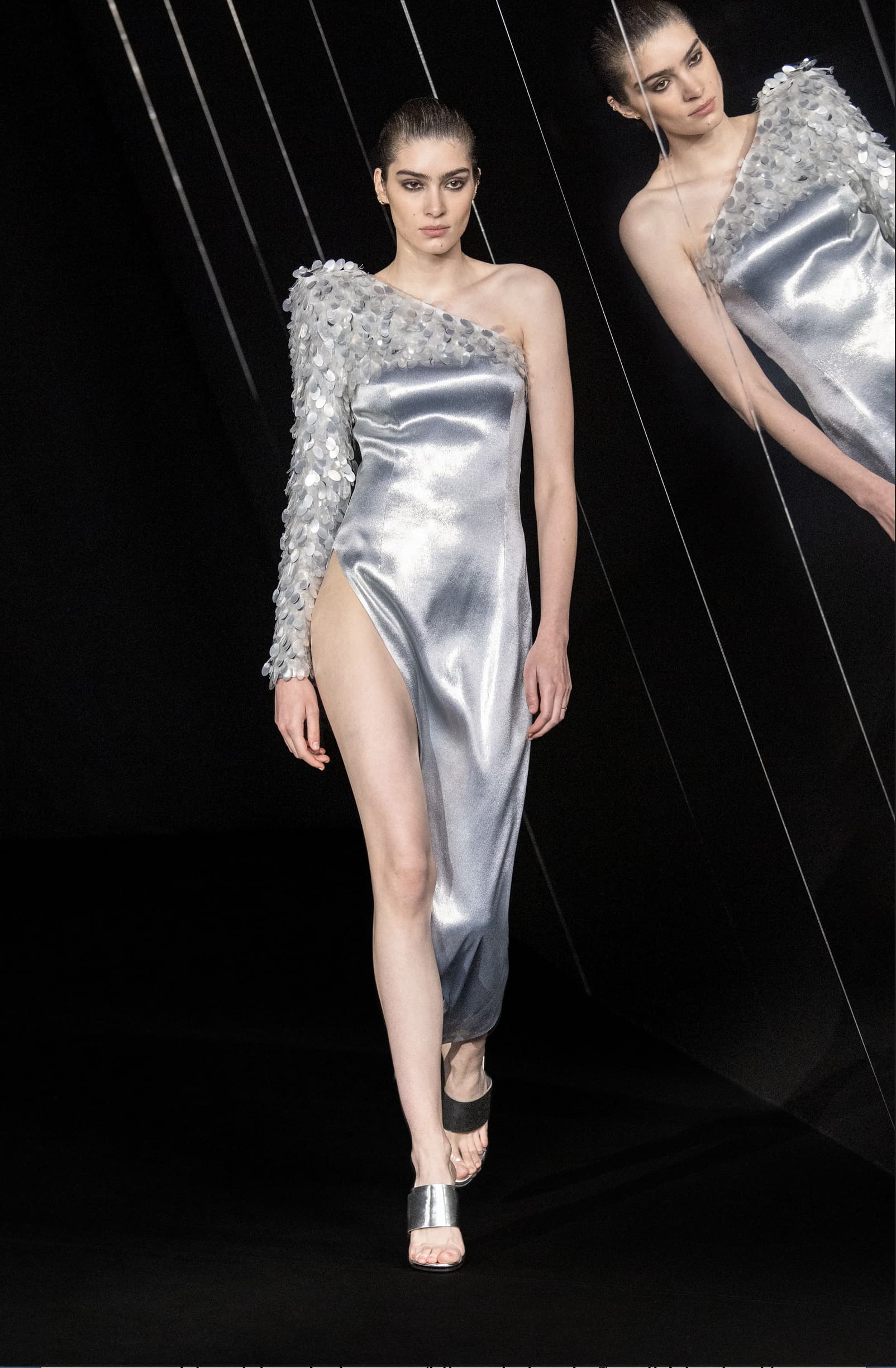
Azzaro Couture
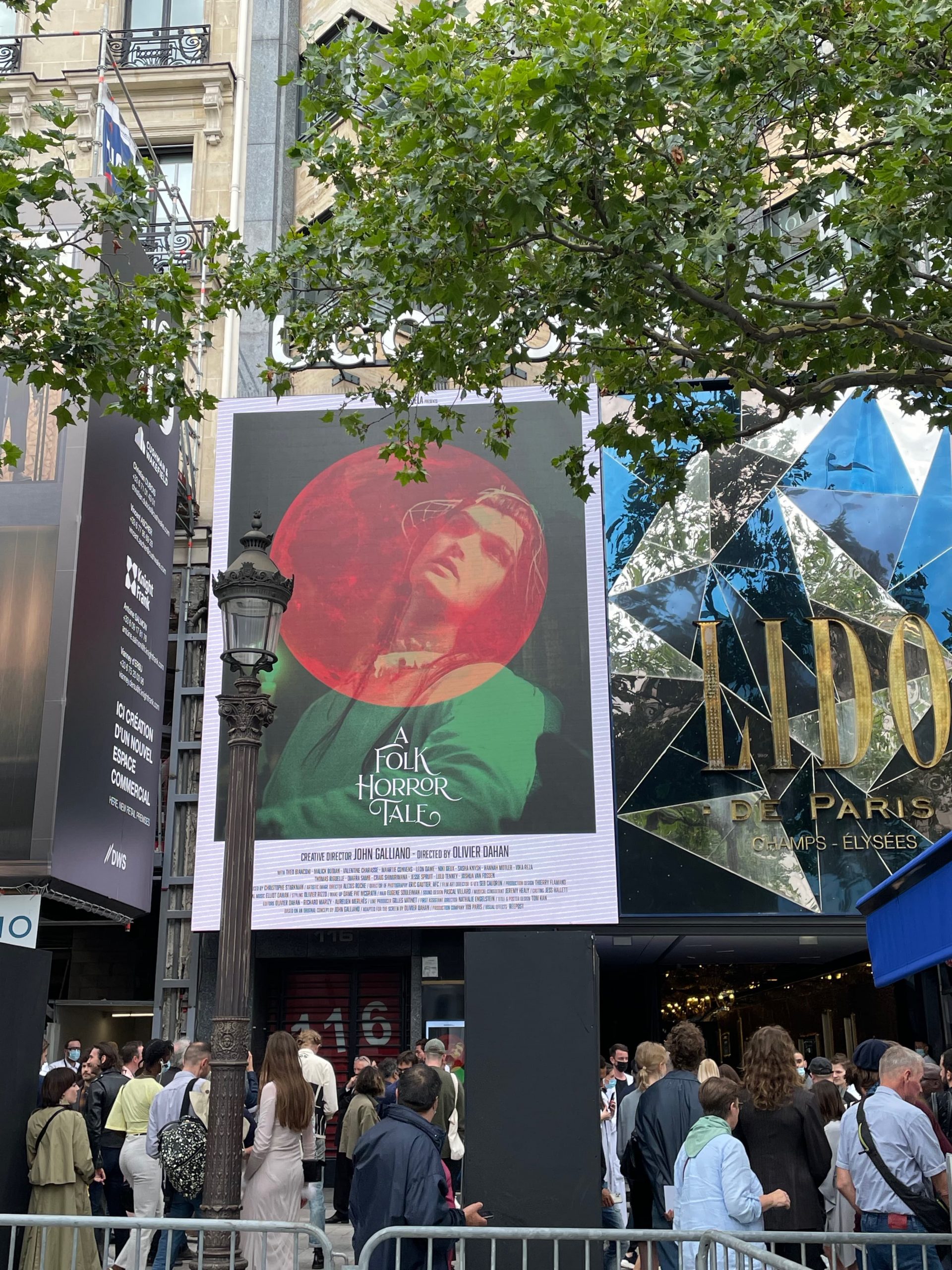
John Galliano opted for a near full-length period folk horror film directed by Olivier Dahan with an actual in theater premiere. In the first of two segments, Galliano painstakingly spoke about the tedious process of experimenting with fabrics – stretching and shrinking them to their limits – and even cutting broken mirrors into a dress and a head crown. Along with a separate podcast, this portion of the film is an in-depth visual discourse on the design and aesthetic procedures of the clothes worn by the kids within the different time frames of the actual movie.
As with all films, this fashion one too ended with an apotheosis of a sort – a kind of wild explosion of fireworks, meteors, bombardments, and yes, clothes as the once peaceful kids by the calm seaside fought off an invasion from elsewhere. Galliano spoke about how each garment came together, each with their characteristics – all made with the same deference and devotion to couture methodology, even for a mirror queen crown or a rough stitch long coat.
History is within each of these handcrafted Artisanal garments. A charcoal stonewashed wool jacket and flared trousers, a blue enzyme, and stonewashed wool cape coat frayed trims, or a Gobelin motif stone washed jackets enzyme washed and shrunk repeatedly as dressmaking traditions guide their transmutations of shapes and textures. Then, the dark blue indigo overdyed wool shirt collar fitted jacket and trousers shrunk multiple times to fit perfectly on the model’s body – this is couture.
“I found this list of inventions by black people from the Library of Congress. There were many inventions that we didn’t know. I work with my studio out in Westlake, LA coming up with these different structures that aren’t clothes and problem-solving involving the expertise of local costume designers. I want to reintroduce these inventions to black people,” Kerby Jean-Raymond said via email on the premise of his debut couture collection shown upstate Hudson at the estate of beauty mogul CJ Walker.
These Pyer Moss clothes are great, taking away the more showy sculptures imposed on them for the show. Beneath the green curtain shade ‘hat,’ there is a fabulous green jacquard high neck long dress. Underneath the white pearl string beads of the light purple lampshade, the hat is a long sleeve corset mock neck fold dress with asymmetrical trim edges. “We worked with many different experts, not just sowing clothes but like welding some pieces together or molding fiberglass,” Jean-Raymond said.
“I update my work but never really change,” the designer said of the continuation of his overall aesthetics. Every Pyer Moss shows have been about the contributions of black American to the advancement of culture, perhaps in areas not often acknowledged.
However, this couture show will partially eviscerate the notion that the Pyer Moss brand is primarily about streetwear clothes and great sneakers. It is about telling stories about black cultural achievements, a great deal more than just garments.
It isn’t the spigot of immediate commerce that drives haute couture then or now. Haute couture is once considered an arc and a well of creativity that filters down all levels of the brand’s aesthetics and products, from clothes to accessories to beauty. Today, this claim may no longer holds as the central tenet.
Instead, haute couture now, especially in the hands of the younger maverick generation of designers, has evolved to encompass social and environmental values that they champion personally and as budding brands adding new voices to the echo chamber that is the fashion system.
What set Pierpaolo Piccioli, Demna Gvasalia, and Kerby Jean-Raymond apart is that small thinking isn’t part of their orbit. On a massive scale, these designers are expanding their brands and extending their aesthetic and thinking far beyond the orbit of the fashion system.
“Couture is above trends, fashion, and industrial dressmaking,” Gvasalia said.
All these respective designers’ works and aesthetics in haute couture can become a fundamental mandate of contemporary fashion that will reverberate far beyond the confines of fashion itself. They have taken heritage and made it into modern clothes. Perhaps this paean fall season can transcend beyond the art/fashion axis veneer, with broader influences on the larger societal culture. How fashion designers see, tell, and remake history isn’t so different from how most of us do the same in our personal lives. Seeing their fall-winter 2021-2022 collections live, by appointments, and digitally, there is a feeling that maybe just one last thing coming out of Pandora’s box – hope.
